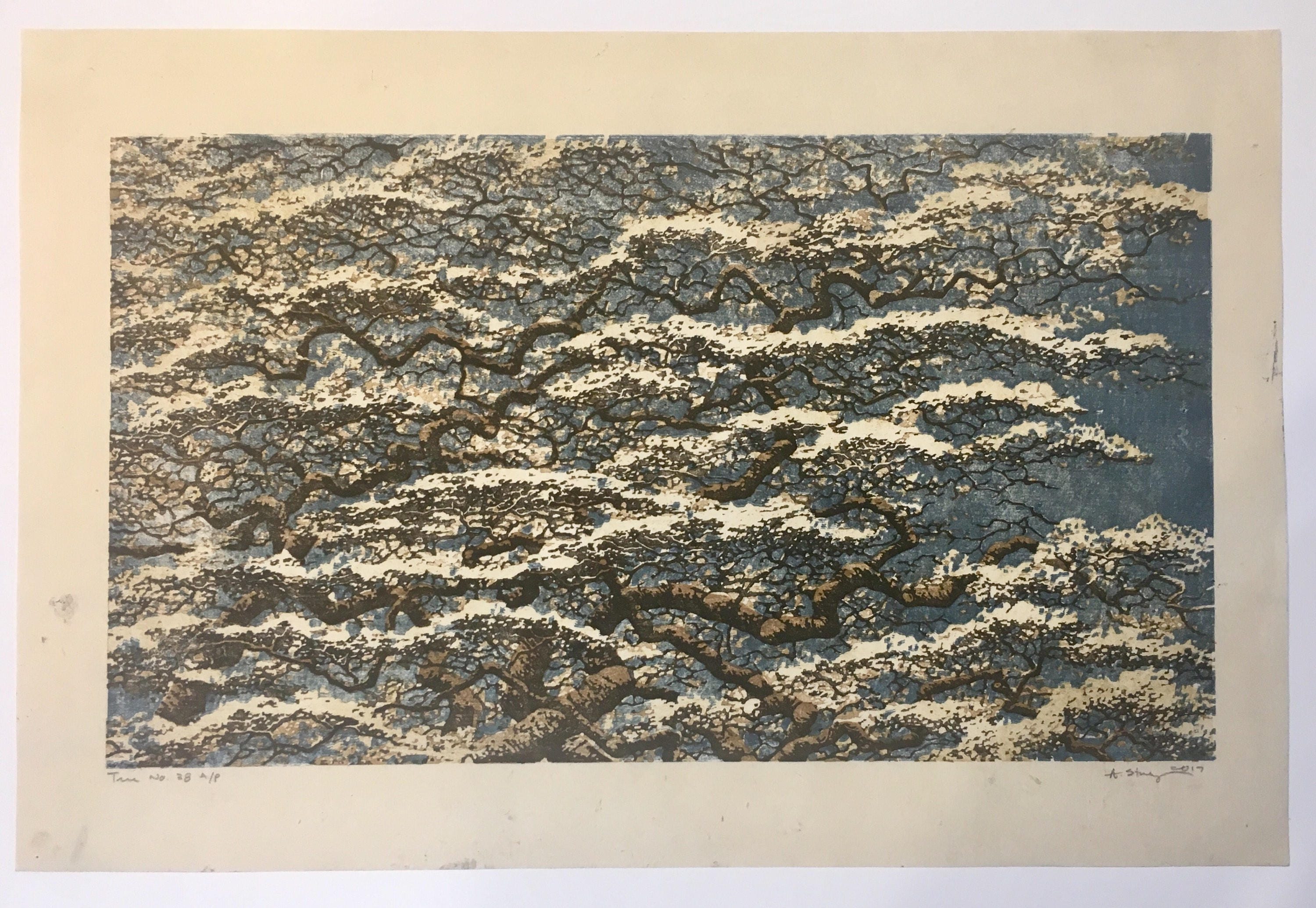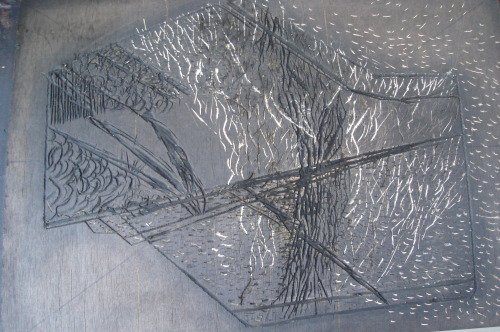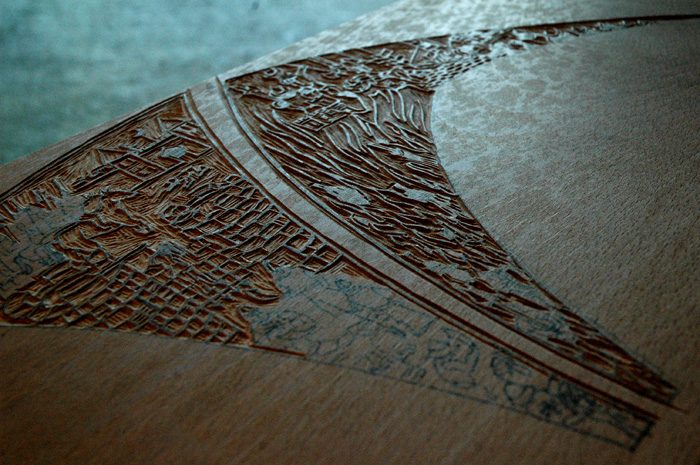

#Solarplate moku hanga registration#
I am printing on the smooth side of dry Masa paper, so I’m pretty sure that the Imagon will give adequate blacks on wet Rising Stonehenge, but I would still like the ability to get fully saturated transfers on dry paper if possible as using dry paper will help me with multi-plate registration by eliminating paper expansion and contraction due to moisture levels. The main evidence supporting this hypothesis is that I get my greatest density when the channels in the plate go all the way to the plastic. The other theory is that the ImagOn emulsion simply cannot hold as much ink as SolarPlate because it is only 50 microns thick, versus SolarPlate which is almost a millimeter. This will be easy to investigate once I get another jar of Mars Black. One top theory is that the Akua Mars Black which I used for the SolarPlate tests has greater optical density or better wiping characteristics than the Akua Carbon Black that I have been using with the ImagOn. By the end of the evening, I got some good plates that printed pretty well, but I was still not able to get the density of blacks that I can reliably attain with SolarPlate.

After considering a long list of hypotheses, my conclusion is that my almost empty jar of ink was too old and its gummy consistency was playing havoc with my plate wiping.įor this evening’s session, I decided to eliminate as many variables as possible. In my earlier session I had a lot of trouble getting consistent results and good ink transfer. I’ve been trying to establish a baseline exposure for the aquatint screen. Posted in Uncategorized | Tagged ImagOn, intaglio, printmaking, solarplate | Leave a reply Imagon Improving In order to remain creative, I need high confidence that my 4′ plate will work as planned. I do require absolute control over my processes because I am making a huge investment in time and money to put together a large print from multiple plates.

Also in many cases, I deliberately incorporate coarse aquatint texture into my designs. I want this, too, but my images aren’t photographic in nature so I am much more willing to sacrifice grain and tonal subtleties for the ability to print large. For the most part, their goals are to reduce grain in the image and render very subtle tonal changes across the entire range. My use of ImagOn and digital stochastic screens is unusual for this community. Most PDN users are from the alternative photographic process world and those that work with photopolymer are typically trying to achieve a “printerly” effect in a piece that is essentially a photograph. I have been using Mark Nelson‘s Precision Digital Negatives process to calibrate my ImagOn plate making process. With ImagOn, I don’t even think about ruining the material and this leads to greater output and more paths followed. I know that I am more careful when using a large piece of SolarPlate or painting on an expensive canvas.
#Solarplate moku hanga free#
Because ImagOn is inexpensive and I make the plates myself, nothing is precious and I am free to experiment to my heart’s content. The real reason is psychological and it has to do with creativity. My rationale is not as simple as merely saving money – one could argue that the time I spend designing and executing a print is worth more than I would would ever spend on plates and paper and ink. My vision involves large prints, but I make lots of smaller prints along the way and for these I still prefer ImagOn because of its lower cost. ImagOn is currently available in 24″ wide rolls and if I can tolerate a seam, I can butt together two pieces of ImagOn to create a plate almost 4′ wide. Ready-made plates are simply not available in the sizes I need and those sizes that are available run about $0.20 per square inch, compared with ImagOn which costs $0.02 per square inch. ImagOn is a challenging material to master but it has two huge advantages which are potentially unlimited plate size and lower cost. Seriography and lithography were also options, but intaglio felt like the most promising technique for the images I have in mind.

I also wanted the ability to incorporate very small details that are hard to obtain with hand-cut relief plates. I chose intaglio over relief methods because I wanted to create tonal gradients unavailable in linocuts and textures unavailable in woodcuts. The reason has to do with my artistic vision which involves large, two, three, and four foot intaglio prints made from multiple plate impressions using image decompositions similar to those found in reduction linocuts and Moku Hanga. I am sometimes asked why I put so much time and effort into learning to make plates from ImagOn when I could be using high-quality, ready-made photopolymer plates like SolarPlate or Toyobo KM plates.


 0 kommentar(er)
0 kommentar(er)
